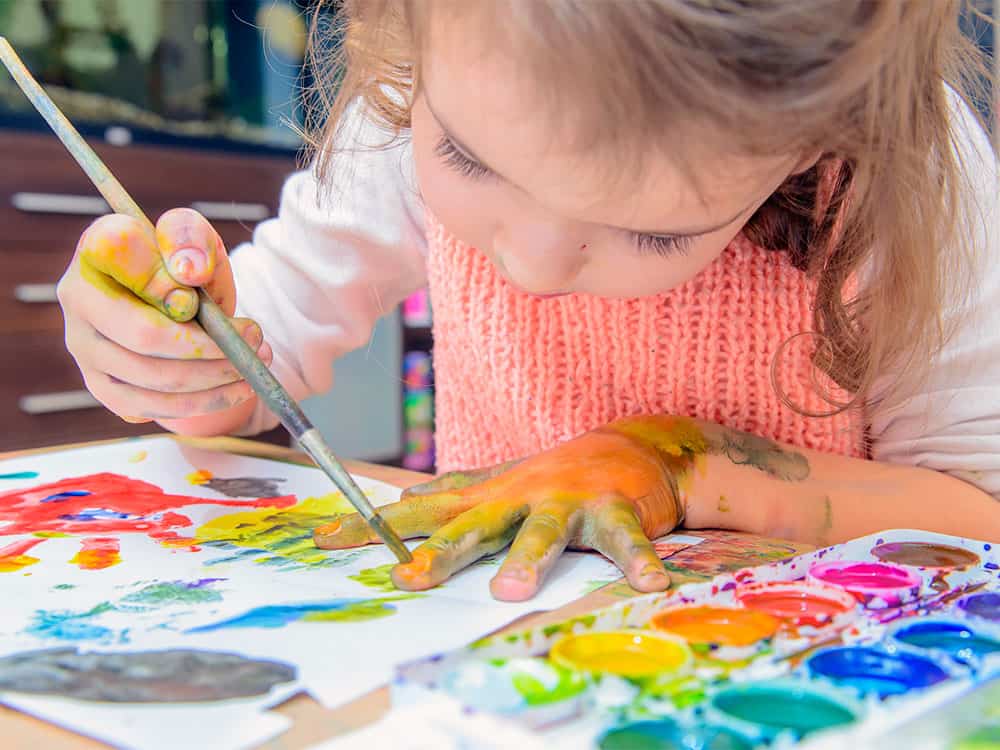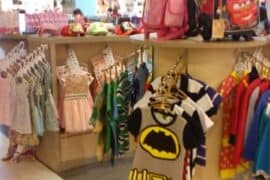Unlocking Your Little Artist’s Potential: Preschoolers Painting 101
Welcome, dear parents, to the colorful and wondrous realm of preschoolers painting! As guardians of these little bundles of creativity, you’ve probably noticed their eyes light up at the sight of a vivid palette or their tiny hands itching to make a mark on a blank canvas. Painting is not just a fun activity; it’s a crucial developmental milestone that can support your child’s growth in enchanting ways. So, let’s embark on this artistic adventure together and discover how you can nurture your preschooler’s inner Picasso!
The Benefits of Painting for Preschoolers
Before we dive into the brushes and paints, let’s briefly touch on the incredible benefits that painting offers to young artists:
- Cognitive Development: Painting encourages problem-solving and critical thinking as children figure out how to express their thoughts through colors and shapes.
- Motoring Skills: Fine motor skills get a workout as little fingers grasp paintbrushes, learning to control pressure and movements.
- Sensory Exploration: The varied textures and colors in painting stimulate the senses, important for cognitive development.
- Social/Emotional Growth: Art can be a safe form of expression for feelings and experiences, fostering emotional maturity.
- Language Skills: Discussing their artwork helps children build vocabulary and communication skills as they learn to describe their visual creations.
- Confidence Building: Creating a piece of art that is wholly theirs can be a significant boost to a child’s self-esteem and independence.
Setting the Stage for Your Preschooler’s Painting Journey
Let’s set the scene for your young artist to thrive. Here are some key tips to create an inspiring and safe environment for painting:
- Choose a Space: Dedicate a specific area for painting—whether it’s a corner of a room or a small table. Make sure it’s easy to clean and child-friendly.
- Protective Gear: Aprons or old t-shirts to protect clothing, and newspapers or drop cloths to cover surfaces, will make clean-up a breeze.
- Art Supplies: Starting with non-toxic, washable paints, various brush sizes, and sturdy paper suitable for small hands is perfect for beginners.
Remember, the focus is on the process, not the end product. So breathe easy, let go of perfection, and encourage your little one to explore and enjoy the act of painting itself!
Introducing a World of Colors to Your Preschooler
Colors are like words to a painter—they convey moods, tell stories, and open up worlds beyond our imagination. Teaching your preschoolers about colors can be as simple as discussing the color of the sky or as fun as mixing paints to discover a new shade. This exploration is fundamental in their understanding of art and the world around them.
Now that we’ve covered the introductory strokes to get you started, stay tuned for our next brush-stroke where we delve deeper into painting techniques fit for tiny fingers and creative minds. Together, we’ll help your child’s artistic flair bloom right before your eyes!
And remember, every daub of paint and stroke of the brush is a step towards growth for your little artist. By nurturing their creativity, you’re not just cultivating skills; you’re painting precious memories that will last a lifetime. Stay with us as we journey further into the delightful world of preschoolers painting, where every picture tells a story, and every color sings a song.

5 Things Parents Should Know in Preparing for Preschoolers’ Painting
- Embrace the Mess: Creativity can be a messy process, especially with preschoolers. Understand that spills and splatters are part of the journey and can be the most memorable moments for your child. Have cleaning supplies ready and maintain a lighthearted approach to the inevitable mess.
- Non-toxic is a Must: Preschoolers are known to explore with their mouths as much as with their hands. Ensure that all painting supplies are non-toxic and safe for young children. This includes the paint, paper, brushes, and any other tools they may use.
- Simplicity is Key: It’s easy to overwhelm little ones with too many choices. Start with a few primary colors and simple tools to help them focus on the experience rather than the equipment. As they grow more confident, you can introduce more options.
- Process Over Product: For preschoolers, the act of painting and the fun of exploration are more important than the finished painting. Praise the effort and the experience, not just the outcome. Ask open-ended questions about their artwork to encourage them to think and talk about their process.
- Regular Practice: Just like any other skill, painting gets better with practice. Offer regular opportunities for your child to paint, making it a routine part of your schedule. This will help them refine their skills and continue to find joy in artistic expression.
Equipping yourself with these insightful tips ensures you’re well-prepared to support and enjoy your preschooler’s painting journey. By recognizing the importance of safety, simplicity, and focusing on the joy of creation, you’ll provide a nurturing environment that’s conducive to both fun and development.
Painting Activities to Spark Imagination
Once your little one is ready to dip their brush into the world of color, try these engaging painting activities:
- Finger Painting Fun: Let’s start with the basics. Finger painting is wonderful for tactile exploration and encourages direct sensory involvement with the paint.
- Brushwork Basics: Introduce various brushes and demonstrate simple strokes. This helps with dexterity and understanding how tools can influence art.
- Color Mixing Magic: Teach them the magic of creating new colors by mixing primary colors together. It’s a great science lesson hidden within an art experience!
- Paint by Music: Turn on different genres of music and ask your child to paint what they hear. It’s an amazing way to explore the connection between the senses.
- Nature-Inspired Art: Collect leaves, flowers, or twigs and use them to create patterns with paint. This encourages creativity and an appreciation for the natural world.
Engaging in a variety of painting activities can expand your child’s techniques and help them discover their favorite ways to express their creativity. It’s also a delightful way for you to be involved in their artistic exploration.
So, equip your toolkit with these essential insights, suggest exciting activities, and watch your preschooler’s painting abilities and enthusiasm bloom. You’re not just managing messes and mixtures; you’re cultivating a future filled with color, joy, and expressive artistry!
See more great Things to Do with Kids in New Zealand here. For more information see here
Disclaimer
The articles available via our website provide general information only and we strongly urge readers to exercise caution and conduct their own thorough research and fact-checking. The information presented should not be taken as absolute truth, and, to the maximum extent permitted by law, we will not be held liable for any inaccuracies or errors in the content. It is essential for individuals to independently verify and validate the information before making any decisions or taking any actions based on the articles.




